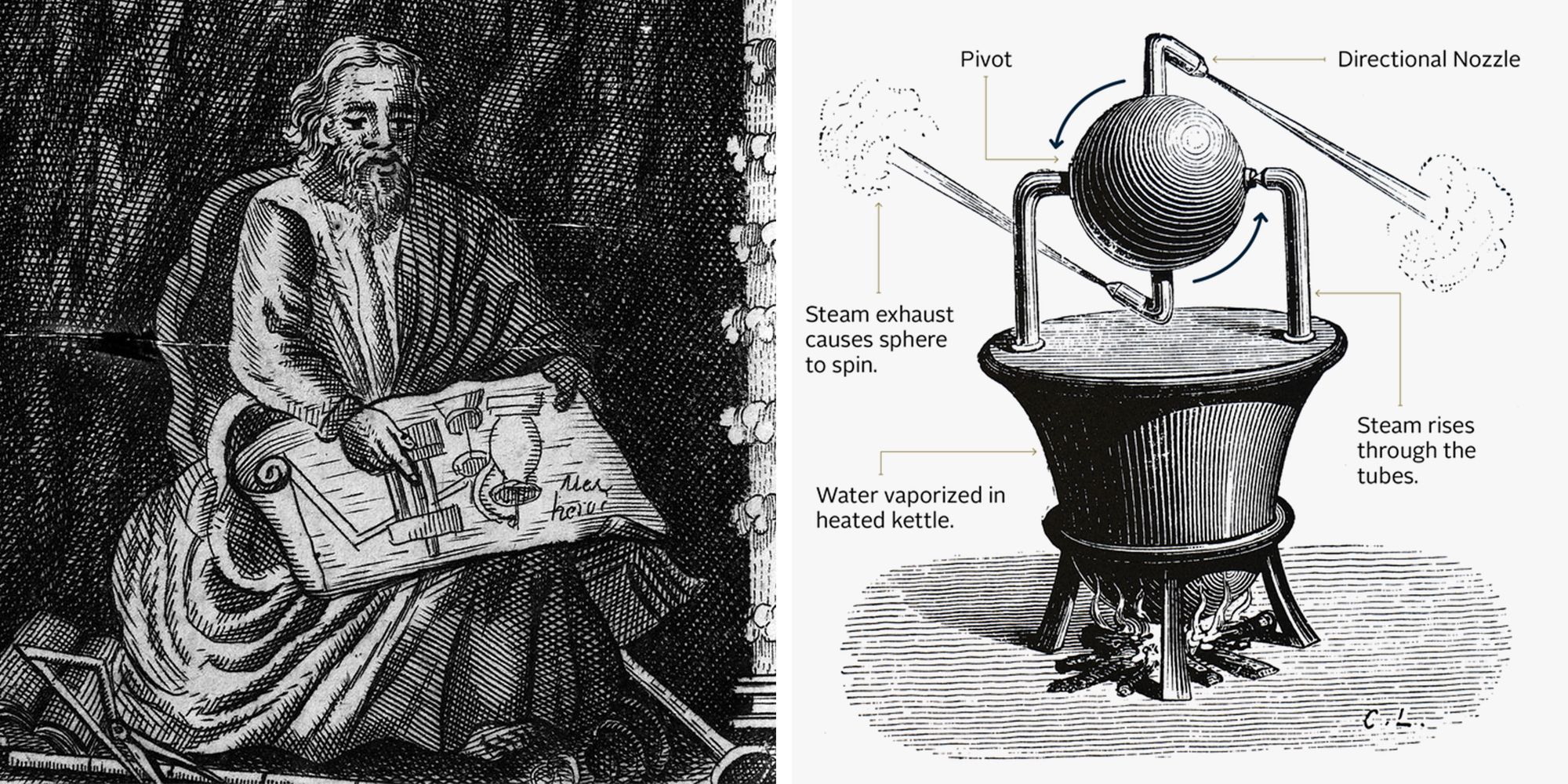The Aeolipile
The Aeolipile, also known as Hero’s engine, was an ancient steam engine invented by the Greek mathematician and engineer Hero of Alexandria in the 1st century AD. The device consisted of a spherical vessel with two nozzles on opposite sides, which was mounted on a water kettle. Water was heated in the kettle, creating steam that was forced out of the nozzles, causing the sphere to spin rapidly.
The steam-powered device was not used for any practical purpose, but it was considered a scientific curiosity and used to demonstrate the power of steam. The Aeolipile is considered an important precursor to modern-day rockets and jet engines, as it demonstrated the principle of reaction propulsion by expelling steam out of a nozzle to create forward motion.
The Inventor: Hero of Alexandria
The aeolipile, or Hero’s steam engine, was invented by Hero of Alexandria, an ingenious Greek mathematician, engineer, and inventor. As a leading figure in ancient engineering, Hero made significant contributions to the fields of mathematics, physics, and mechanics. His works, including the treatises “Pneumatica” and “Automata,” featured a range of mechanical devices that showcased his innovative thinking.
The Aeolipile’s Design and Function
The aeolipile is a simple yet groundbreaking device consisting of a hollow sphere with two opposing bent tubes or nozzles. The sphere is mounted on a stand, allowing it to rotate freely. The hollow interior of the sphere is filled with water, and a heat source is placed beneath it. As the water boils, steam is produced and expelled through the nozzles, creating a jet of steam that causes the sphere to rotate.
The Principle of Jet Propulsion
Hero’s steam engine operates on the principle of jet propulsion, a concept still used in modern-day rockets and jet engines. The aeolipile is an early example of harnessing the power of steam to create motion, demonstrating the potential of steam power long before it became a driving force in the Industrial Revolution.
Historical Context: A Glimpse into Ancient Engineering
Though the aeolipile was not used for any practical applications during Hero’s time, it serves as a testament to the innovative thinking of ancient engineers. The device highlights the advanced understanding of mechanics, thermodynamics, and the properties of steam that existed in the Hellenistic period, offering a glimpse into the rich history of ancient engineering.
The Legacy of Hero’s Steam Engine
The aeolipile’s design and principles laid the groundwork for the development of modern steam engines. Inventors like Thomas Savery, Thomas Newcomen, and James Watt would refine and expand upon Hero’s concept, leading to the rise of steam power as a dominant force in the Industrial Revolution. Today, the aeolipile serves as a source of inspiration for modern engineers and inventors, demonstrating the power of innovative thinking and the potential to revolutionize industries with new technologies and concepts.
📚📖 Make sure to join Ancient Library on Telegram, and become part of a unique group 👉🏻 https://t.me/theancientlibrary
If you want to help us out and support the page, you can buy us a coffee ( we really appreciate it) 👉🏻 https://www.buymeacoffee.com/ancientlibrary
I am the Librarian, and I, together with the guardians of the Ancient Library, curate content for this site. Welcome, and enjoy your stay.





